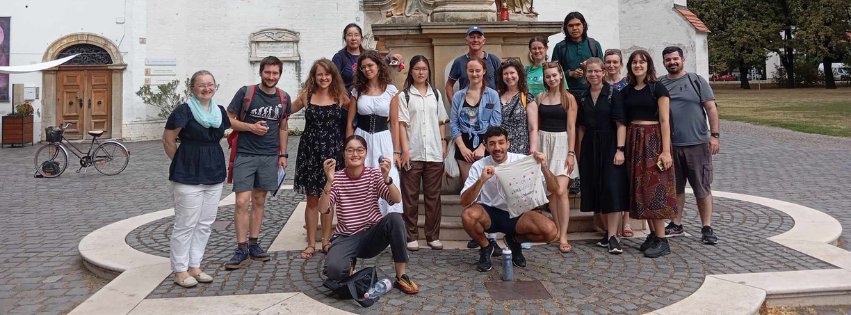Students from 18 countries attended SZTE's Hungarian Studies Summer University
The Hungarian Studies Summer University was organized for the twenty-fourth time by the Faculty of Humanities and Social Sciences of the University of Szeged.
The program, held between July 14 and August 9, attracted more students than ever before. The four-week summer university focused on language learning, exposure to Hungarian culture, and the development of intercultural competence.
This year, 58 students from 18 countries came to Szeged for SZTE's traditional and internationally renowned Hungarian Studies Summer University. Students attended two 90-minute language classes in the mornings, and in the afternoons they listened to cultural lectures given by faculty members.
Participants could also get to know Szeged better by visiting the Synagogue, the Franciscan Church, the Móra Ferenc Museum, and the REÖK Palace. The program also included trips to Budapest and Ópusztaszer, a film club, and a dance club.
"In addition to language learning and cultural knowledge, students also develop intercultural competence, and many make lifelong friendships here," said Anett Árvay, the program's organizer.
The program is a great experience not only for the participants of the Summer University but also for the students of the Master's program in Hungarian Studies: they are hosting the classes in the morning and tutoring the foreign students in the afternoon, thus getting a taste of multicultural education and assignment preparation.
What makes the Summer University special is that it brings together people from different backgrounds and ages to spend two to four weeks together. As Anett Árvay explained, this year, all age groups were represented, from university students to pensioners.
"Many are first-generation, who speak excellent Hungarian, but have no writing skills at all, and lack the knowledge of technical terms, which were rarely used in the family. Many are researching their roots: there was a Brazilian student whose great-grandfather emigrated in the 1890s, but Hungarian was no longer used in the family," she added.
Source: SZTE Faculty of Humanities and Social Sciences
Photos by Anett Árvay / SZTE Hungarian Studies
